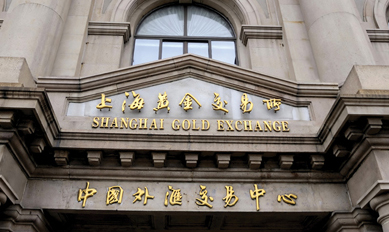The report contains many important topics we need to address, but the two that stand out to me are: i) ensuring that China’s gold market supports the internationalisation of the renminbi, and ii) that large-scale Chinese institutional investors – such as insurance funds – are allowed to invest in gold.

Q: How have policy developments changed the shape of China’s gold market over the past 20 years?
A: In 1999, the World Gold Council and the DRC issued a report on China’s gold market, discussing whether it could be opened up and turned into a true market. The findings of this paper formed the basis for a second report from the World Gold Council, outlining how the gold market and the financial market should be developed. Both reports played a seminal role, creating a framework that would allow China’s gold market to evolve from small and insignificant to a leading player on the world stage. State controls were lifted, gold circulation was liberalised and the Shanghai Gold Exchange (SGE) was established as a market- oriented trading exchange.
Q: Why was the report published at this year’s China Gold Congress?
A: Over the past two decades, China’s gold market has developed a robust trading infrastructure, based around the SGE, the Shanghai Futures Exchange (SHFE) and over-the-counter dealing in the commercial banking sector. However, we believe that China’s gold market now needs to become more integrated with the global gold market, so it can fully realise its potential.
Q: What are the next steps?
A: Our main aim is to work with government bodies, regulators and market practitioners to establish how best we can use this report to develop China’s gold market on a long-term, sustainable basis. The report contains many important topics we need to address, but the two that stand out to me are: i) ensuring that China’s gold market supports the internationalisation of the renminbi, and ii) that large-scale Chinese institutional investors – such as insurance funds – are allowed to invest in gold.


Q: What are the biggest challenges facing China’s gold market?
A: I believe there are three big challenges facing China’s gold market. First, the investor base is too narrow. Second, market infrastructure needs to change. And third, the regulatory environment should be strengthened.
Looking first at the investor base, current regulations prevent long-term asset owners, such as pension funds and insurance companies, from investing in gold. This poses two problems: asset owners cannot take advantage of the diversification benefits that a modest allocation to gold brings to a portfolio and the gold market lacks the long-term perspective and depth of liquidity that large, institutional asset owners bring to investment markets.
The gold market infrastructure has room for improvement too. Retail traders dominate the SHFE and SGE. Both exchanges need to think about how best to attract new investors – including domestic institutional investors and overseas market participants – and tailor products, services and their value proposition accordingly.
On the retail side, fraudulent online providers have scammed many individual gold investors, offering products underpinned by illegal, unregulated gold trading. The People’s Bank of China is aware of this issue and has introduced regulations to combat it but enforcement is vital to protect retail investors’ hard-earned savings.
A more robust regulatory and standard-setting framework is needed to raise standards across the supply chain. More effective regulation and monitoring processes are necessary and regulations should be amended to allow institutional investors to invest in gold.
Q: What are the main recommendations in the report?
A: The report offers three broad recommendations to deal with the challenges outlined above. First, a more robust regulatory and standard-setting framework is needed to raise standards across the supply chain, protecting China’s gold investors and ensuring China’s gold mining industry respects and protects the environment. More effective regulation and monitoring processes are necessary to maintain the trust of current and future gold market participants.
Second, the report suggests that regulations should be amended to allow institutional investors to invest in gold, so that they can benefit from the diversification benefits that gold can bring to a portfolio.
Finally, China’s gold market infrastructure is robust, but it could be reinforced by understanding the needs and requirements of domestic institutional investors. Market infrastructure providers should also understand the needs of banks, miners and refiners in “Belt and Road” initiative countries, so that they develop the right products and services to support the internationalisation of the renminbi.
Q: How do you think China’s gold market will develop over the next five to ten years?
A: It is hard to put a specific timeframe to this, but in my opinion, China will take a leadership role in global financial and gold markets. At some point in the future the renminbi may become a reserve currency, ranking alongside US dollars, euros and yen, and capital controls may become a thing of the past. And of course, China will be home to the world’s largest gold market.
But looking at the next five to ten years, I believe that China’s gold market will become more open, especially for domestic institutional investors, and that its mining companies will continue to focus on ensuring they respect the environment. I believe we will also see more innovation. China is also home to companies that create advanced microchips, smartphones and electric vehicles, all of which contain gold. And there are many innovative scientists, who develop and patent new uses for gold in technology. Overall therefore, the outlook is bright.



